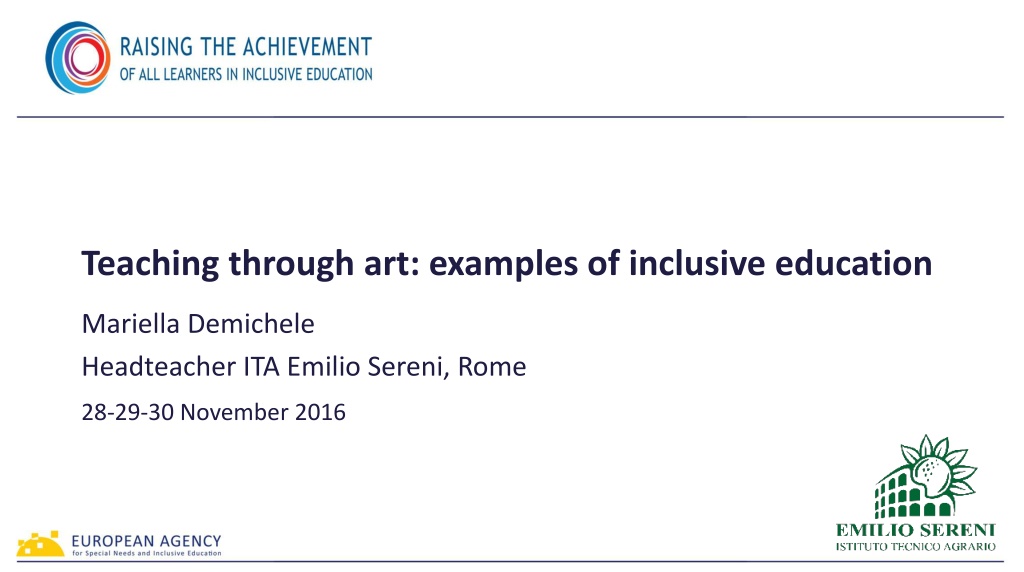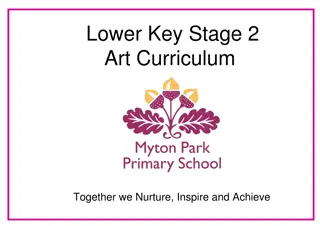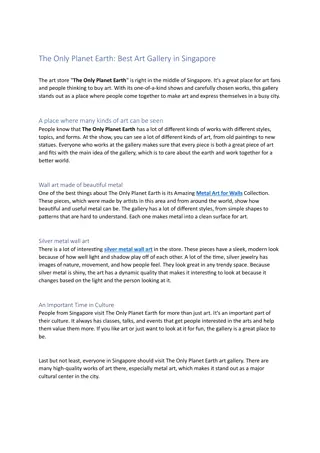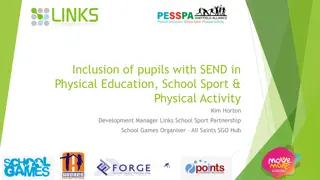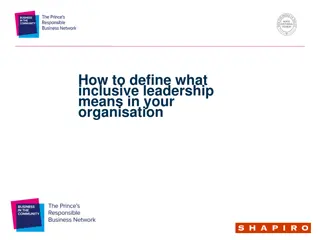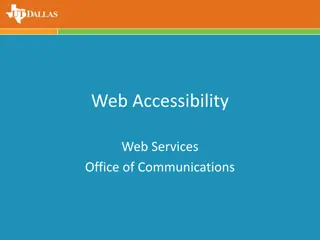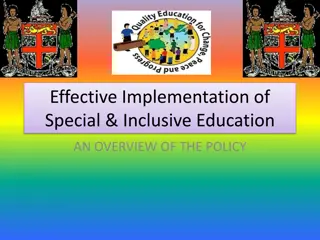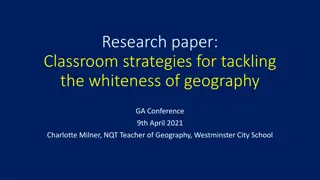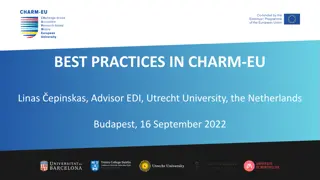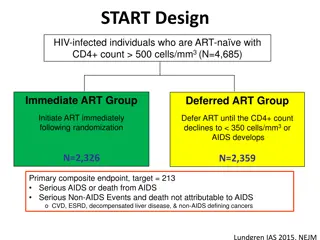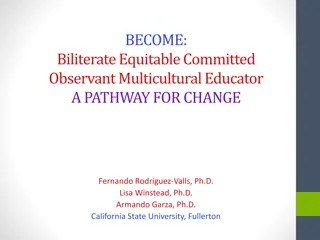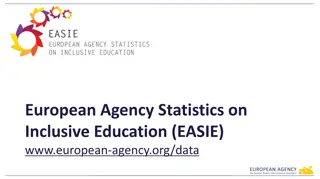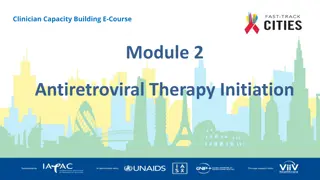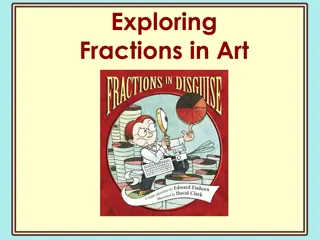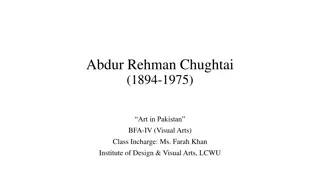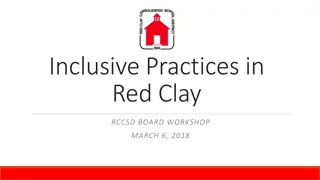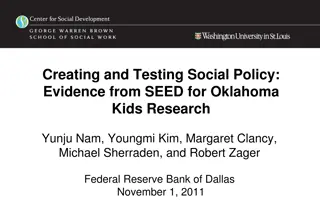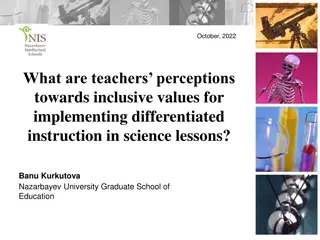Inclusive Education Through Art: Examples and Strategies
Embracing inclusive education through art involves creating flexible and creative teaching methods to support students with disabilities. A creative classroom environment fosters personal growth and problem-solving skills, while arts integration connects art forms with other subjects to enhance learning. Constructivist practices in arts integration encourage student engagement, creativity, reflection, and collaboration, promoting a positive and supportive learning community.
Download Presentation

Please find below an Image/Link to download the presentation.
The content on the website is provided AS IS for your information and personal use only. It may not be sold, licensed, or shared on other websites without obtaining consent from the author. Download presentation by click this link. If you encounter any issues during the download, it is possible that the publisher has removed the file from their server.
E N D
Presentation Transcript
Teaching through art: examples of inclusive education Mariella Demichele Headteacher ITA Emilio Sereni, Rome 28-29-30 November 2016
Teaching through art: examples of inclusive education One of the biggest challenges of our education system is to allow also students with severe disabilities to participate in educational activities of the class. In these educational context teacher has to be: flexible pedagogical expert creative
CREATIVE CLASSROOM A learning environment where a personal-education takes place, an education which helps each student to stimulate their own creative, communicative and intellectual potential providing the possibility in the future to find adequate solutions to different situations. Examples of creative and collaborative methodologies that use emotional intelligence and divergent thinking
ARTS INTEGRATION (1) It is an APPROACH to TEACHING in which students construct and demonstrate UNDERSTANDING through an ART FORM. Students engage in a CREATIVE PROCESS which CONNECTS an art form and another subject area and meets EVOLVING OBJECTIVES in both
ARTS INTEGRATION (2) Constructivist practices that align with arts integration are: Drawing on students prior knowledge Providing active hands-on learning with authentic problems for students to solve in divergent ways Arranging opportunities for students to learn from each other to enrich their understandings Engaging students in reflection about what they learned, how they learned it, and what means to them
ARTS INTEGRATION (3) Using students assessment of their own and peers work as part of the learning experience Providing opportunities for students to revise and improve their work and share it with others Building a positive classroom environment where students are encouraged and supported to take risk, explore possibilities and where a social, cooperative learning community is created and nurtured
...construct and demonstrate UNDERSTANDING Arts integration: provides multiples ways for students to make sense of what they learn (construct understanding) makes their learning visible (demonstrate understanding) In the arts students have central and active roles as meaning makers. This role demands that they not only acquire knowledge but they develop the capacity to reflect on what they are learning and to use it as they interpret and create work of arts . (Lauren M. Stevenson Richard Deasy)
through an ART FORM When students are involved in art integration, their learning is evident in the products they create. Todays research: Says that the traditional way to communicate students learning through writing and speaking is not enough; Points to the power of learning through a variety of senses or modalities (visual, aural, kinaesthetic )
By their nature, the arts: Engage students in learning through observing, listening and moving; Offer learners various ways to acquire information and act on it to build understanding; Offer a natural way to differentiate instructions; Provide an authentic context in which students solve problems.
Students engage in a CREATIVE PROCESS In this diagram, the creative process is made visible as five open circles. Arrows indicate the ways one can enter the process and the myriad ways the phases interact.
When students engage in the creative process: they produce original work that communicates their ideas, insights, points of view, and feelings they take the risk of the inquiry and experimentation. It is the teacher s responsibility to set a creative problem or challenge for students to solve, but not to take over and solve the challenge for the students.
which CONNECTS an art form and another subject area. A distinguishing aspect of arts integration is its interdisciplinary connections. Connections are made between: a specific art form and a specific curriculum area a specific art form and a school s concern or need. Both connections - to curriculum or a concern/need - are strongest when they are mutually-reinforcing.
and meets EVOLVING OBJECTIVES in both. This final part of the definition underscores two ideas: arts integration requires teachers to set objectives in both the art form and the other subject area just as objectives evolve and challenge students to deepen their understandings in the different subjects, objectives in the art form must also evolve if students are to remain challenged
Evolving objectives Objectives evolve over time as students experience and understandings develop. As students master each objective, they are ready to take on the next. Teachers monitor students progress and adjust objectives to keep students challenged and interested within a unit or across a year. As students mastery grows, so do their feelings of self-efficacy.
Creative Workshop Activity: Creating collage from phrases taken from Alessandro Manzoni s novel The Betrothed Purpose: The activity allowed students to rework in a creative way the contents learnt through the reading, the analysis and the discussion of the novel. The fundamental aim of the workshop was to encourage the process of learning through a metacognitive approach to the novel, enhancing inner resonances, associations, personal experiences.
Students feedback: They liked : Having learned to make and use autonomously tools that helps them in the study Group work in a serene environment Informal setting Creative works with the images The opportunity to choose independently the passages of the text for them most significant
What have your students learnt? Use different expressive languages Interact positively with others Work for the execution of a specific task Respect the instructions Importance of silence and concentration Importance of imagination in the learning process
What have you learnt as teacher? Use appropriate tools for the assessment of students concept maps Schedule work time and organize setting, so that they are functional to the proposed activity Consolidate the role of the group leader using specific interventions to motivate students and assist them in problem-solving Enhance and promote education and training paths able to increase students creativity and imagination
THANK YOU for your attention
